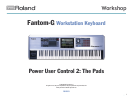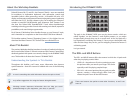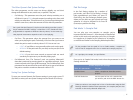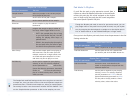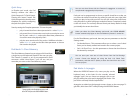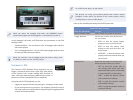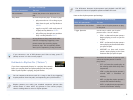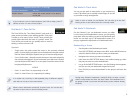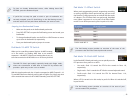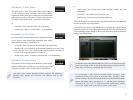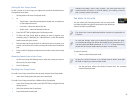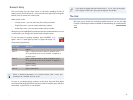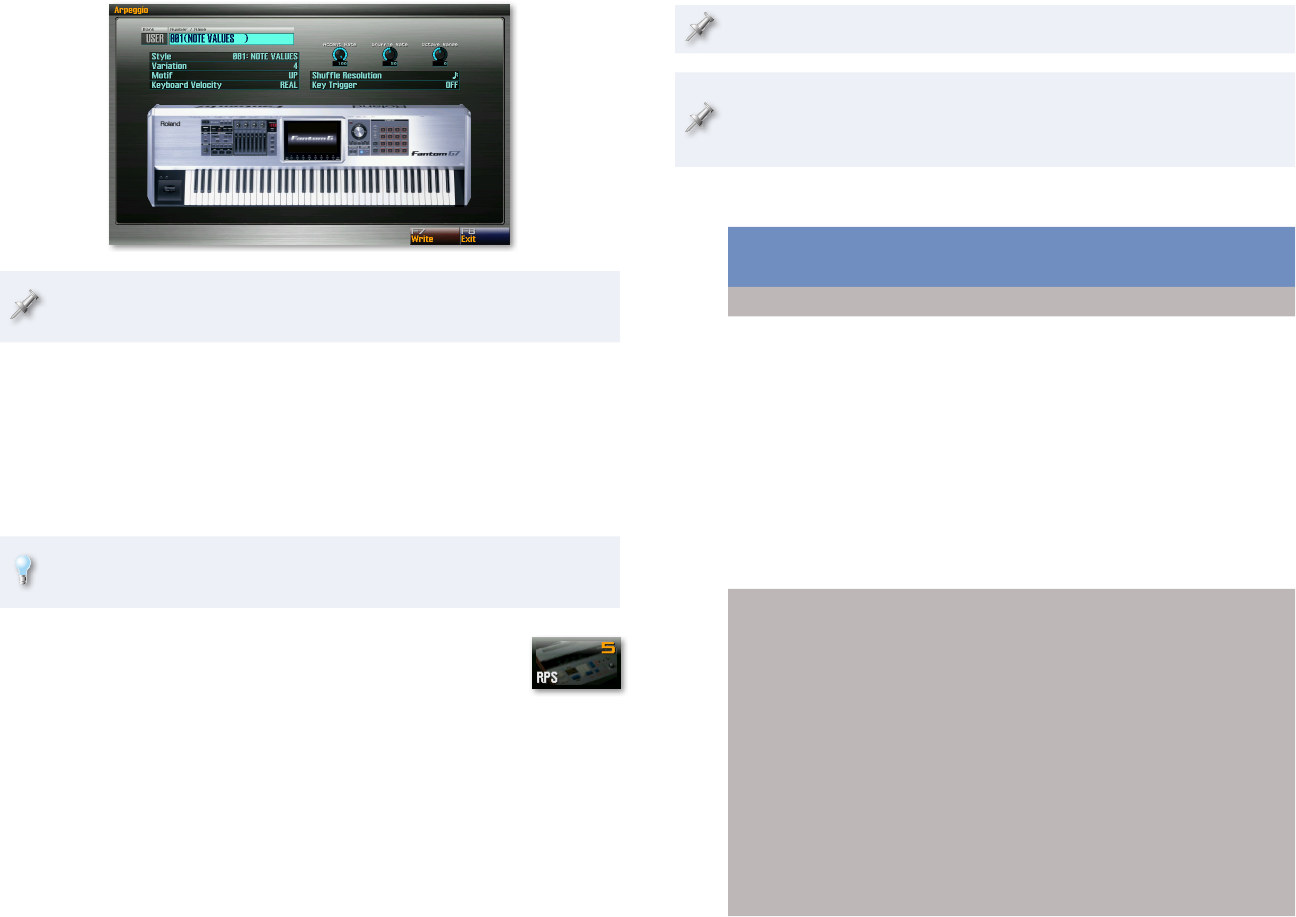
7
When you select the Arpeggio pad mode, the ARPEGGIO button
automatically lights and the arpeggiator is automatically turned on.
In the Arpeggio Pad mode, you’ll find these two parameters on the Pad
Settings screen:
Set Number/Name—
• You can select a set of 16 arpeggio styles stored in
the current project.
Pad 1-16 Arpeggio Number—
• You can dial in the arpeggio style you want
for each pad using these parameters.
When you construct a set of arpeggio styles you’d like to keep, press
F7 (Write) to store it in the current project.
Pad Mode 5—RPS
The Fantom-G’s RPS (Realtime Phrase Synthesis) lets you
trigger a sequencer phrase from a pad. Since each phrase
in the Fantom-G can contain multiple MIDI channels of
data—with each channel playing a different part sound—a
phrase can hold an arrangement of any complexity.
Using the pads for RPS playback, you can:
trigger pre-sequenced hard-to-play passages—
• onstage or in the studio.
lay out and sequence a song structure—
• by assigning a phrase for each of
the song’s sections to a pad, and then sequencing your triggering of the
sections in the desired order.
As an RPS phrase plays, its pad flashes.
RPS phrases are really just standard phrases that contain musical
passages. If there aren’t any phrases in the current project, there’s
nothing there to use as an RPS phrase.
Here are the available pad settings for the RPS pad mode:
Global RPS Mode Settings
With this parameter: You can:
RPS Set Number/Name select an RPS set to play on the pads
Trigger Quantize set the way in which your phrases start.
You can choose:
REAL—• so that the phrase begins
playing as soon as you hit its pad.
BEAT—
• so that the phrase starts
playing at the next beat after you
press its pad.
MEASURE—
• so that the phrase starts
playing at the next measure after you
press its pad.
Velocity Sens determine the amount of velocity with
which the pad’s sounds play. Select:
OFF—• to have the sounds play at
the velocity with which they were
sequenced. When you’re constructing
a song using RPS, use this setting.
LOW—
• to play the phrase’s sounds
with a minimum of velocity.
MID—
• to play the phrase’s sounds
with medium velocity.
HIGH—
• to play the phrase’s sounds at
maximum velocity.



